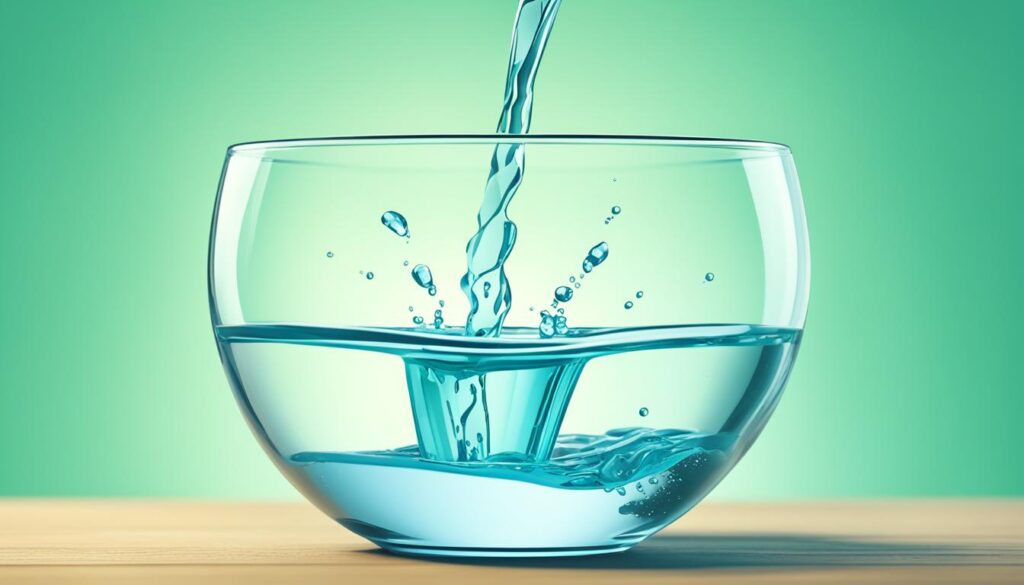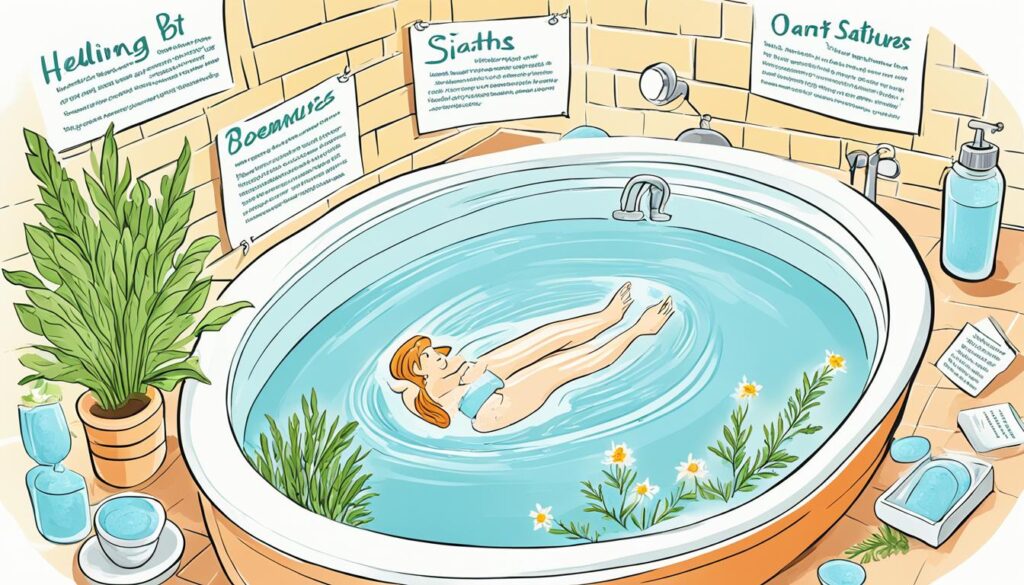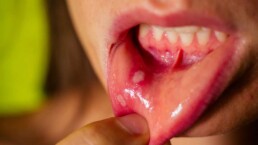Dealing with an anal fissure can be painful and frustrating. But, there are many natural remedies that can help. This guide will show you effective home remedies for managing anal fissures.
Table of Contents
ToggleAnal fissures are small tears in the skin around the anus. They’re often caused by constipation, diarrhea, or childbirth. These tears can make bowel movements painful and cause a burning feeling afterward. The good news is, many fissures can be treated without surgery. You can use dietary changes, over-the-counter medications, and natural therapies.
This guide will cover the best home remedies for anal fissures. We’ll talk about staying hydrated, eating fiber-rich foods, taking sitz baths, and using topical treatments. By understanding what causes fissures and trying these natural methods, you can find relief and help your body heal at home.
Key Takeaways
- Anal fissures are small tears or cracks in the skin lining the anus, often caused by constipation or diarrhea.
- Many anal fissures can be treated without surgery using a combination of dietary changes, over-the-counter medications, and natural therapies.
- Effective home remedies for anal fissures include maintaining proper hydration, incorporating fiber-rich foods, using sitz baths, and applying topical treatments.
- Addressing the underlying causes of fissures and incorporating a holistic approach can help provide relief and promote long-term healing.
- It’s important to seek medical attention if symptoms persist or worsen, as some cases may require more advanced treatment.
Importance of Hydration for Fissure Relief
Drinking enough water is key to managing anal fissures. Not drinking enough can lead to constipation, which often causes these painful tears. Drinking water daily helps soften your stools, making them easier to pass and reducing pain.
Recommended Daily Fluid Intake
The National Academy of Medicine says adult men should drink about 13 cups (104 ounces) of fluids daily. Women should aim for around 9 cups (72 ounces). This total includes water from drinks, foods, and your body’s natural production.
Impact of Caffeine on Hydration Levels
Caffeine makes you urinate more, but in small amounts, it can still help with daily hydration. Drinks like coffee and tea can be part of your hydration plan. Just make sure to balance them with other hydrating drinks during the day.
Drinking enough water is crucial for easing anal fissure symptoms and healing. It’s a key part of managing this common and painful issue.

Role of Fiber-Rich Diet in Treating Anal Fissures
If you’re dealing with the pain of anal fissures, a high-fiber diet might help. A 2015 study showed that eating more fiber treated 87% of these issues in just 3 weeks. It also stopped them from coming back for a year. Eating 20-30 grams of both soluble and insoluble fibers helps prevent constipation and supports healthy digestion.
Fiber makes your stool softer and helps it move faster. This reduces the strain that can cause or make anal fissures worse. Good foods to eat more of include:
- Flaxseed
- Psyllium
- Fruits like berries, apples, and pears
- Vegetables like broccoli, spinach, and Brussels sprouts
- Whole grains such as oats, quinoa, and brown rice
Small changes to your diet can make a big difference. Focus on eating foods high in fiber to help your fissures heal. This easy change can bring you relief and comfort back.

Benefits of Sitz Baths for Soothing Fissure Pain
If you’re facing the pain of anal fissures, sitz baths can help. Soaking the anal area in warm water for 10-20 minutes relaxes the muscles. This can ease the pain from fissures.
Sitz baths have an 80% success rate in treating anal fissures. This easy home remedy reduces inflammation and irritation. It’s a great addition to your self-care.
Techniques for Comfortable Bowel Movements
There are more ways to make bowel movements easier with anal fissures. Here are some tips:
- Lean forward during bowel movements to reduce pressure on the fissure.
- Brace your abdominal muscles to support your body and minimize straining.
- Keep your mouth slightly open to help relax the entire pelvic region.
Using these techniques can make bowel movements more comfortable. It helps with healing and reduces pain from anal fissures.

Using Laxatives and Stool Softeners for Fissure Management
Your doctor might suggest using laxatives or stool softeners for anal fissures. These options can make bowel movements easier and help healing by avoiding further skin injury around the anus.
Laxatives like polyethylene glycol (PEG) are good choices. They keep stool soft by adding fluid, preventing it from becoming hard and dry. This helps reduce the pain and discomfort of a fissure.
Stool softeners, such as docusate (Colace), can also help. They make passing stool easier, cutting down on strain and irritation during bowel movements.

Always follow your doctor’s advice when using laxatives or stool softeners for fissures. Take them as directed and along with other treatments like more fiber and sitz baths.
Using laxatives and stool softeners can make bowel movements smoother and less painful. It also helps with healing. Always talk to your healthcare provider to find the best treatment for you.
Topical Treatments for Fissure Pain and Healing
Topical treatments can help ease the pain of anal fissures. They are often the first step in treating this common issue.
Anesthetics and Steroids for Pain Relief
Using topical anesthetics like lidocaine can numb the nerves in the anal area. This gives quick relief from sharp pain. Hydrocortisone, a steroid, can lessen inflammation, itching, and discomfort in the area.
Nitrates and Calcium Channel Blockers for Relaxation
Some treatments focus on relaxing the anal sphincter muscle. This helps healing. Topical nitrates and calcium channel blockers increase blood flow and relax the muscle, aiding healing.
Doctors may recommend these treatments for 6 to 12 weeks. They offer a focused way to handle anal fissure symptoms and support healing.

Botox Injections as a Non-Surgical Option
Botox injections are a great non-surgical way to treat anal fissures. They use botulinum toxin, or Botox, to relax the muscle inside the anus. This helps the fissure heal without surgery.
Here’s how it works. Botox injections calm down the tight anal muscle. This stops spasms and tension that can cause fissures. It helps the fissure heal and reduces pain.
Research shows Botox can help 60-80% of people with fissures. But, up to 42% might see the problem come back. It’s key to talk with your doctor about all treatment options to find the best plan for you.
It’s important to know that Botox isn’t officially approved for fissures. Always talk to your doctor about the risks and other treatments. This way, you can make a choice that fits your health needs.
Home Remedies for Fissure: Natural Methods for Relief and Healing
If you’re facing the discomfort of an anal fissure, you’ll find comfort in knowing there are natural home remedies to help. These at-home treatments are a non-surgical way to tackle this common issue. They can be a great first step towards healing.
Keeping hydrated is crucial for fissure healing. Drink lots of water to keep your stools soft and easy to pass. Cutting back on caffeine drinks like coffee and soda can also help reduce irritation.
Eating more fiber-rich foods can also help. Foods like fruits, veggies, whole grains, and legumes make stools softer. This can lessen the strain during bowel movements, which helps with healing.
Sitz baths are a great home remedy for easing fissure pain. Just soak in warm water for 15-20 minutes, a few times a day. This relaxes the anal muscles and aids healing.
Laxatives and stool softeners from the pharmacy can also be helpful. They keep stools soft and easy to pass. Always follow the directions and start with a low dose.
While these natural methods can help, seeing a doctor is key if the fissure doesn’t get better or gets worse. Some fissures might need special treatment, like creams or surgery.
For effective fissure relief, it’s important to tackle the cause and use a holistic approach. This means changing your diet, your lifestyle, and possibly seeking medical help. By trying these at-home treatments, you can play a big part in managing your condition and finding relief.
Signs of Effective Fissure Treatment
If you’re looking for relief from anal fissure discomfort, knowing the signs of effective treatment is key. You should see less pain and bleeding when you go to the bathroom. This means the treatment is working and helping you heal.
But, watch out for symptoms that don’t get better or get worse. If you’re still in a lot of pain, bleeding a lot, or haven’t seen any improvement after 8 weeks, it’s time to get medical help. These signs might mean you need more advanced care for your fissure.
When to Seek Medical Attention
If you see any of these signs, it’s time to talk to a doctor:
- Persistent or getting worse pain during or after going to the bathroom
- Too much or lasting bleeding from the affected area
- No betterment in your condition after 8 weeks of trying to fix it yourself
- Severe discomfort that makes it hard to do daily tasks
A doctor can check you out, figure out why you have a fissure, and suggest the best treatment. With the right care, you can feel better and help your fissure heal.
Conclusion
Anal fissures can often be treated at home with natural methods for fissure relief and healing. Eating a high-fiber diet, drinking plenty of water, using sitz baths, applying creams, and avoiding straining can help. These steps can prevent and heal fissures effectively.
Home remedies work well for most fissures, especially the acute ones. But if your fissures don’t heal or keep coming back, you might need to see a doctor. It’s important to watch how you’re doing and know when you need more help. By using natural remedies and seeing a doctor when needed, you can manage anal fissures and improve your life.
The home remedies for anal fissures talked about here are a natural and easy way to get better. By adding these steps to your daily life, you can help manage your condition and stop future problems. Remember, fixing the main causes and sticking with your treatment plan are crucial for long-term success in beating anal fissures.
FAQ
What is an anal fissure?
An anal fissure is a small tear in the skin around the anus. It causes sharp pain when you go to the bathroom and burning afterward.
How can anal fissures be treated without surgery?
Many fissures can heal without surgery. This includes changing your diet, using stool softeners, and applying creams.
How does staying hydrated help with anal fissures?
Drinking enough water helps prevent dehydration and softens your stool. This makes it easier to pass without straining.
What role does a high-fiber diet play in treating anal fissures?
Eating a diet high in fiber can help heal fissures and prevent them from coming back. It adds bulk to your stool and speeds up digestion.
How can sitz baths help with anal fissures?
Sitz baths relax the muscles around the anus and ease the pain. They have an 80% success rate in healing fissures.
What types of laxatives and stool softeners can help manage anal fissures?
Doctors may prescribe laxatives or stool softeners to make bowel movements easier. These can help prevent constipation and heal fissures.
What topical treatments can be used for anal fissure pain and healing?
Topical treatments like anesthetics and steroids can help with pain and healing. Some treatments also relax the muscles and improve blood flow.
How do Botox injections work for treating anal fissures?
Botox injections relax the muscles around the anus for 3-4 months. This can help heal fissures, but some may come back.
When should you seek medical attention for an anal fissure?
See a doctor if symptoms get worse or don’t improve after 8 weeks. They can check the cause and suggest the right treatment.
Source Links

This article is medically reviewed by Dr. Chandril Chugh, Board-Certified Neurologist, providing expert insights and reliable health information.
Dr. Chandril Chugh is a U.S.-trained neurologist with over a decade of experience. Known for his compassionate care, he specializes in treating neurological conditions such as migraines, epilepsy, and Parkinson’s disease. Dr. Chugh is highly regarded for his patient-centered approach and dedication to providing personalized care.








